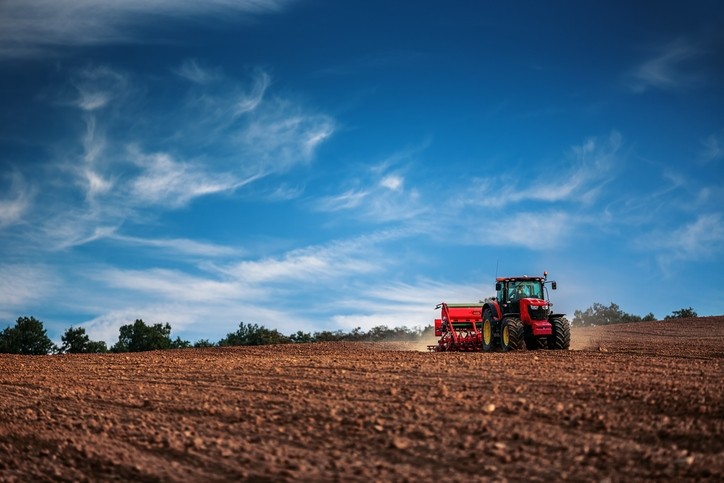USDA details potential $14.5bn payments for feed, crop producers

The US Department of Agriculture (USDA) released details about enrollment and payment rates and how the $14.5bn in funding for the market facilitation program (MFP) would be allocated for feed crop, specialty crop and dairy and swine producers Thursday [July 25].
The total farmers support package, which covers more than feed and livestock production, is set to provide about $16bn in funding through the Commodity Credit Corporation (CCC) Charter Act.
The support program was put in place for a second year to sustain producers through a period of ongoing trade uncertainty and “unfair trade practices, which are not only are tariff barriers but non-tariff barriers” said Sonny Perdue, US secretary of agriculture on a conference call about the program.
The initial announcement that the three-part support program, which includes the MFP, a food buying program and trade development program, would be continued followed the break down in trade talks between China and the US earlier this year, he said.
“The USDA FSA [Farm Service Agency] will administer the market facilitation program of about $14.5bn,” he said. “USDA’s Agricultural Marketing Service and Food and Nutrition Service will administer a food purchasing and distribution program similar to what we did last year to our food banks and needy Americans, and USDA’s Foreign Agricultural Service has begun to administer its agricultural trade promotion program.”
The USDA’s three-part support program was first implemented in 2018 to address a series of tariffs brought against a selection of US-produced agricultural products.
However, the funding mechanism for the MFP has been changed this year and is no longer based entirely on the type of commodity being raised, said Rob Johansson, chief economist with the USDA. “There were a number of factors from last year’s program that we heard about and wanted to correct for,” he added.
Feed, row crop payment plan highlights
One challenge in updating how the MFP system worked was to design it in a manner that would not distort spring planting decisions, said Johansson.
“We know that due to the disruptive trade tariffs that we have right now that American producers have had more difficulty in exporting their commodities, and in particular, we know, for example, that we have a large number of soybeans, for example, in storage right now,” he said on the call. “The last thing we wanted to do was develop a program that would essentially make producers feel that they should plant more soybeans in order to get a larger program payment again.”
“We didn’t want producers to plant for the program – we wanted them to plant for the market, and for their market conditions,” he added. “That was made even more difficult because of the cold wet spring we had during planting this year, and we also wanted to make sure that we maintained our commitments to our WTO obligations. We wanted to make sure that we were putting this program out in a way that was legally defensible.”
Last year payments were focused on the commodity or feed crop being raised, said the USDA
This year, the funding allocated to support feed, food and livestock producers is still expected to mitigate “trade damage” and payment is based on the estimated amount of that damage caused by tariffs, said Johansson.
However, the damage estimate has been determined by county and is being applied by planted acre.
“The program is agnostic to the type of crop planted – so, for example, a producer coming in and notifying [the Farm Service Agency about planting] a 100 acres of corn would receive the same payment rate in that county [as] a producer coming in and notifying with 100 acres of barley, or a 100 acres of soybeans, or a 100 acres of wheat.
“Producers should not have been planting to try to increase the program payments as the county rate will be the same for all those acres per county.”
The variation in what producers receive ranges from $15 to $150 per acre, but that fluctuation is based on how much damage their county is calculated to have taken, he said. Information on the roughly 3,000 county payment rates is available from the USDA.
The crop payments cover feed grains including corn, sorghum, soybeans, oats, barley and wheat, he said. Payments are set to be released at three separate times in mid-to-late August, November and January – although later payments may be canceled if a trade deal is established.
The first MFP payment for crop producers is expected to be at least 50% of the total payment a producer qualifies for with the remainder coming in later payments, said Bill Northey, US undersecretary for farm production and conservation.
“If you were in a county or have acres with $15 payment on it … you will get a $15 payment on those acres now,” he said. “If you had over $30 [on those acres] you would get 50% payment – so, for example, if you had a $40 per acre payment you would get a $20 per acre payment now.”
Additionally, for insured producers who were unable to plant intended crops, like corn or soybean, because of the wet weather a $15 per acre payment for planting select cover crops, like alfalfa, has been established, he said.
Payment levels per “person or legal entity” are capped at $250,000 for each of the categories – non-specialty crops, specialty crops and dairy and hog production, he said. Total payments for producers who work with several categories, like corn and hog production, would be $500,000.
When asked about the possibility of a need for an additional round of producer support next year, Perdue said that he had told producers not to expect funding this year.
“We’d rather have the fair trade rather than any kind of government program."
Industry responses
Members of multiple feed crop producer organizations welcomed news about the second market facilitation program.
The National Sorghum Producer (NSP) said they appreciated the support for producers facing challenges from trade disputes.
Dan Atkisson, NSP board of directors chairman, said that sorghum growers have faced a tough year and hope to see the program progress quickly.
He added that the organization is hoping to see “meaningful dialogues” between the US and China as trade talks take place next week.
Members of the American Soybean Association also welcomed information about the program and the continued recognition from the administration regarding the struggles that producers face.
However, they also called for a “quick and positive” end to current tariffs.
Davie Stephens, ASA president, said that he hopes soybean growers will “feel some relief from this assistance.”













